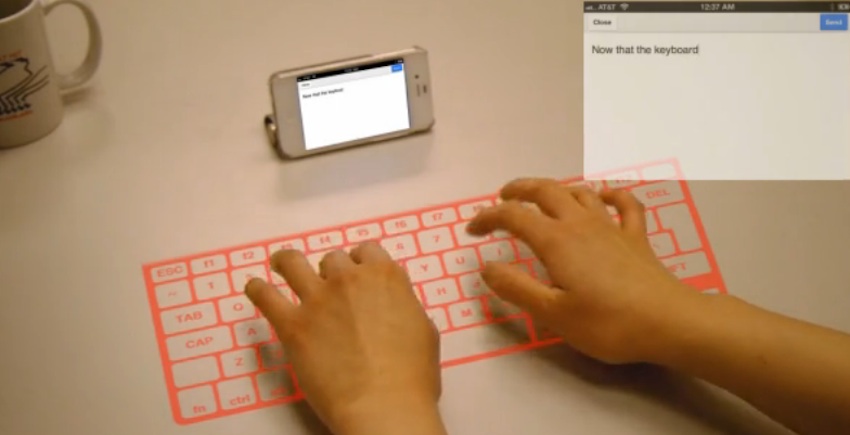Thanks to MIT Students, You May Never Have to Touch Your Smartphone Screen Again
Germaphobes rejoice, because soon, consumers may not have to tap away at their smartphones and tablets using their fingers in order to type out an email and send text messages—at least that’s the goal of developers and researchers out of the Massachusetts Institute of Technology.
Founders and creators of 3dim, a company launched by P.h.D students at the school, are trying to change the way people interact with devices by introducing “the next wave of smart input” through gesture control technology.
As Andrea Colaco, one of the company’s cofounders, explains it, 3dim will “dissolve” the boundaries and constraints between the digital and physical world. “We are starting to see a lot of devices that have restrained touch displays. It’s the de facto standard. [Our product] will morph that into a more natural way of input,” she says.
Using 3dim’s “breakthrough technology,” Colaco says users will be able to type on their smartphones using keyboards that are digitally displayed on hard surfaces, rather than clicking at letters on tiny screens. The technology will also allow people to change songs, play video games and sift through apps seamlessly using simple hand and finger movements.
The six-person team, who recently took home a $100,000 prize at MIT’s Entrepreneurship Competition, says their patent-pending technology unleashes “natural interaction by providing the first accurate 3d gesture sensor for the battery-powered mobile device market…making reliable gesture control on the go possible for the first time,” and essentially replacing “touch.”
Colaco says prize money from the MIT contest will help “significantly move the needle” forward at the company’s headquarters in Cambridge, calling it “a youthful injection” into their firepower to further develop the product, however, they have already been meeting with major phone and tablet manufacturers who are eager to pick up their concept and introduce it to their products. “We have interest from a few manufacturers. We want to get the product out there and take it forward fulltime,” says Colaco. She says the immediate next step is to work with manufacturers that have specific “use cases” in mind, and be able to work with them to make the technology the right fit. “There is always a joint development angle that needs to happen,” she says.
Once a deal comes through, and using the technology becomes the norm when using smartphones, tablets, and products like Google Glass, eliminating the need to touch screens and tap devices, Colaco says she hopes it will help consumers free up some time—and their hands. “One of the things we want to help users do is improve productivity on the go… We believe by off loading interaction from the display screen it will let people get a lot more out of their devices,” she says.
Below is a video that explains how the technology developed by 3dim works:


